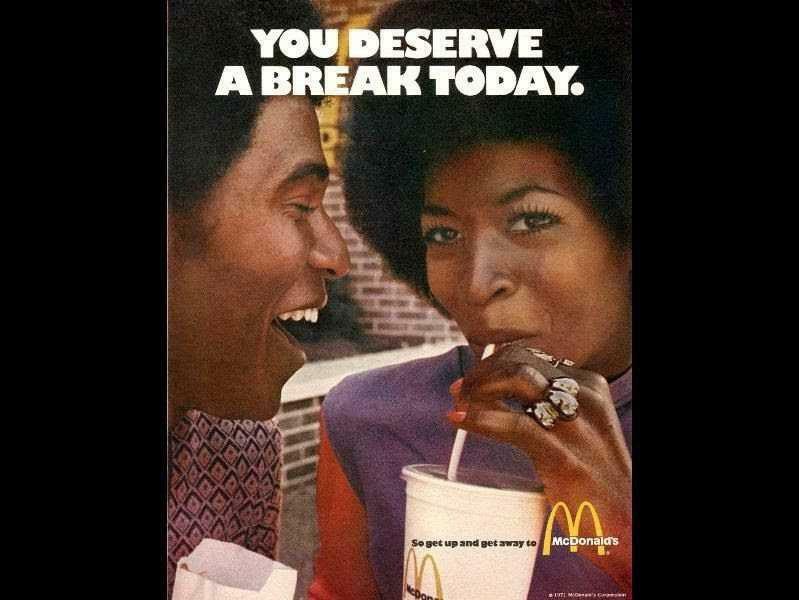Persuasion has been regarded as a significant feature of advertisements and commercials since their spreading in the early 20th century. The fact that the vast majority of people claim that they are immune to ads only proves the tremendous development of hidden persuasive techniques over time. According to Eisend (2015), people have a tendency not to admit advertisement influence on them because they believe it makes them less intelligent. The purpose of this paper is to examine the psychological principles of persuasion and their application in the advertisement as well as to dwell upon their implementation in other spheres.
Various researchers have examined the psychological aspects of persuasion in both commercials and daily communication. The concept of persuasion was explained in detail by Robert B. Cialdini (2001), who figured out its six principles: liking, reciprocity, social proof, consistency, authority, and scarcity. The principle of liking has been chosen for this research. The notion of liking represents directly the main idea this principle bears. Such a technique is used in the advertisement to uncover some resemblance between the target recipient and a particular product. According to Cialdini (2001), the most suitable application of liking is to “uncover real similarities and offer genuine praise” (p. 74). For example, nowadays, there is a tendency to replace models and actors with a perfect shape with average body type people because it creates a sense of resemblance among the target audience. For a better understanding of the topic, some visual representations of the liking principle in the advertisement will be described below.

The example above is taken from the Dove 2013 campaign. Although this ad consists of two major parts, the first corresponds to the topic of the paper. The phrase Doesn’t your skin deserve better care gives the recipient a feeling that they are taken care of (“In Criticizing Rival Products, a Dove Campaign Is Called Unfair,” 2013). It also evokes a sense of self-worth in the audience as well as gives them the challenge to prove love for their skin.
The example below is one of the most successful advertisement campaigns in history. McDonald’s’ Give Yourself a Break is built on the principle of liking, and it has shown how productive this technique can be in the sphere of advertising (“The Best Ad Campaigns,” 1971). Here, one can notice how much empathy is shown to a recipient. Everyone, with no doubt, would relate themselves to a slogan that praises them for any work they have done so far and somehow permits them to get distracted from exhaustive tasks.


The example above is from Nike’s 2012 campaign (“Nike launches “Find Your Greatness” campaign,” 2012). This campaign is considered one the most successful due to a single reason – it is incredibly relatable. The advertisement bears the message of self-worth and self-discovery. When people start to feel highly motivated because of a commercial, they subconsciously recall this particular brand later even if the persuasion to purchase a specific item is not so obvious. An example of ordinary people trying to pursue their dreams is a story that will always have an impact on a human’s mind because the idea of unfulfilled potential constantly triggers one’s feelings.
Psychology and advertisement are notions closely correlated with each other. As the purpose of any advertising campaign or commercial is to persuade the recipient to purchase a particular item, it is usually built on the principle of various psychological approaches. Regarding the persuasive policy of liking, methods of positive reinforcement in psychology are concerned. Cialdini (2016) underlines explicitly concepts of praise and similarities because the fundamentals of liking could not exist without them. The relevance of these concepts is obvious even nowadays because human beings still seek to find common ground with others based on shared interests and expect the gratifying evaluation of their actions.
Considering all the peculiarities of the liking principle, some key features of the communicator, the message and the target audience could be singled out. The main characteristics of the communicator include:
- Attentiveness. The communicator should be able to notice the slightest details about the potential recipient to make use of them later;
- Empathy. People tend to become extremely vulnerable when they feel like somebody understands and appreciates their feelings.
The message of the advertisement should be:
- Sincere. As advertisement is created to persuade someone in the first place, it is hard to believe in what is advertised. So, sincerity is something appreciated the most nowadays;
- Familiar and praiseful. As it was mentioned before, these concepts are crucial for persuasion.
Last but not least, the ideal target audience for such types of persuasion is:
- Vulnerable. When people can be easily influenced, the sense of similarity a priori works better.
- Naive. Although it may sound harsh, people who tend to believe in something easily, create the primary target audience for advertising campaigns.
According to the aforementioned principles and features, a theoretical concept on how to enhance persuasiveness can be created. First of all, a person or a company who is trying to persuade the target audience should act genuinely to conquer their attention. Over the past decades, people have become extremely skeptical about everything connected with the advertisement. Furthermore, along with exposing to the audience some similar features, the communicator should pay much attention to the details about a recipient and use them in further conversation or cooperation. In this way, the recipient would feel a strong connection with the individual or company.
Since the advertisement appearance, there has been a debate over the complete rejection of ethical issues in the advertisement. While some people believe that using various manipulative techniques is strongly unethical, others realize the purpose of the ad is to sell an item in the first place, and the choice to accept these manipulations is always up to people. Researchers note that the advertisement industry has developed significantly, and now, all the persuasive techniques are covered under the informative envelope not to repel the audience (Verlegh, Fransen, and Kirmani, 2015). The examples presented above do not contain any direct request to purchase something. On the contrary, the information provided expresses caring and concern about others. So, even if it has some hidden purpose, it still cannot be considered ethically unacceptable.
All the techniques discussed in the paper apply not only to the advertisement. According to Cialdini (2016), the liking principle is highly productive in the sphere of management and office ethics. The concepts of familiarity and praise are beneficial in communicating with the employees because the work efficiency tends to improve when there is a sense of mutual respect in the team. This principle is also helpful for personal life for obvious reasons.
Conclusion
Methods of persuasion are the subject of interest for people in the 21st century. The principle of liking is one of the major ways of successful persuasion. The secret of its success lies, in the first place, in its flexibility as it can be applied to practically any sphere of life. Its widespread appeal is also of great use because people do not like being persuaded to do something, but they like being praised for something they have done.
References
Cialdini, R. B. (2001). Harnessing the science of persuasion. Harvard Business Review, 2001(10), 72-79.
Cialdini, R. B. (2016). Pre-Suasion. A revolutionary way to influence and persuade. London, LDN, The UK: Random House Books.
Eisend, M. (2015). Persuasion knowledge and third-person perceptions in advertising: The moderating effect of regulatory competence. International Journal of Advertising, 34(1), 54–69.
In criticizing rival products, a Dove campaign is called unfair [Image] (2013). Web.
Nike launches “Find Your Greatness” campaign [Image] (2012). Web.
The best ad campaigns [Image] (1971). Web.
Verlegh, P. W. J., Fransen, M. L., & Kirmani, A. (2015). Persuasion in advertising: when does it work, and when does it not? International Journal of Advertising, 34(1), 3–5.